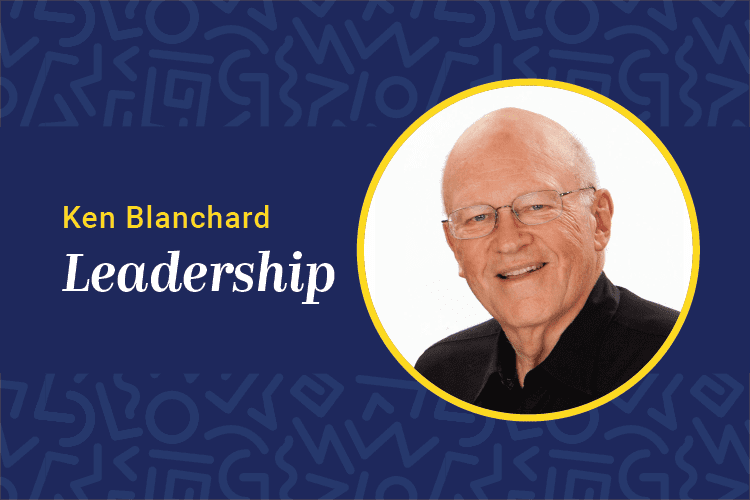Leaders in today’s organizations continuously need to balance expectations from shareholders, customers and employees. How these three groups are ranked largely will determine an organization’s culture. For instance, a shareholder-first organization focused on short-term profits will have a different culture than one that puts its employees first or that focuses on long-term business results and customer satisfaction.
Chief learning officers should determine who is their No. 1 customer or target audience, and then identify how that person or group impacts the organization’s return on learning and development investments, service levels and employee engagement levels within the company. Several companies are adopting an employee-first approach that delivers results in all three areas.
At Southwest Airlines, putting employees first has been a rule since the airline’s beginnings 40 years ago. The results have been impressive. In an industry notorious for losing money, Southwest has generated a profit for 38 consecutive years. “It sounded like heresy when we first said it, but we don’t make any bones about it,” said Colleen Barrett, president emeritus of Southwest. “Our pyramid is upside down from most companies. We clearly and proudly proclaim that our employees are our first customer in terms of priority, our passengers are our second customer and our shareholders are our third customer.”
The same is true at Fortune 500 IT services company HCL Technologies, where CEO Vineet Nayar said, “Today’s hierarchical pyramid isn’t equipped to tackle tomorrow’s challenges. Instead, we need organizations where trust, based on transparency, creates a culture of constant innovation; where managers are as accountable to their employees as employees are to their bosses.”
In both of these organizations and in dozens more like them in different industries — such as Chick-fil-A in quick service restaurants, Wegman’s in grocery, Synovus in financial services, WD-40 in manufacturing, Nordstrom’s in retail and Ritz-Carlton in hospitality and lodging — leaders put their employees first to drive innovation at the bottom of the pyramid.
Leaders in these organizations are expected to turn the traditional pyramid upside down so the customer-contact people are at the top of the organization’s concerns. In this scenario, leaders need to understand that part of their job is to take care of the people who take care of their customers. In other words, leaders work for the people who report to them. A lot of leaders don’t see it this way, but this mindset is vital to empower people to serve customers at a high level. Elements of this mindset create a high-investment, high-expectation environment that supports an engaging environment for employees who in turn deliver superior experiences for customers:
Start with leaders. These organizations know they have to set the example. Leaders have to walk the talk because employees model the behavior they see. “You have to have a 100 percent commitment from everyone that you are going to do this together and you are going to hold each other accountable,” Barrett said.
Garry Ridge, CEO of household-products manufacturer WD-40, goes so far as to remind managers of their mutual accountability to employees at performance review meetings. If a manager recommends that a person be let go — or “shared with the competition,” as WD-40 calls it — the first question asked of the manager is: “What have you done to help your direct report succeed?” If the manager can’t show he or she has coached and supported the direct report, the manager — not the direct report — might be shared with the competition.
This approach to mutual accountability gives leaders permission to step in when tough love is called for. “We are very clear in telling our people what our expectations are,” Barrett said. “We hold them and ourselves accountable for meeting those expectations every day. Sometimes this means having a real heart-to-heart with people and reminding them what your values are. If you have been intentional and firm in explaining what your expectations are, that gives you the opportunity to point to specific examples where they haven’t exhibited the required behaviors.”
Empower employees. Leaders need to be supportive and directive at the same time. When people know leadership not only expects the best from them, but also will back them up with the tools, resources and training they need, they feel comfortable and prepared to make decisions on their own.
“A lot of leaders use the word empowerment too often,” Barrett said. “They say they empower their people, but they really don’t — they’ve got so many rules and procedures and all. But at Southwest, we make it clear to our employees at every level that they are empowered when it comes to customer-service decisions.”
That’s the beauty of the system originally established by Nordstrom. For many years, new employees were given a copy of the famous Nordstrom Employee Handbook — a single 5-by-8-inch card containing 75 words:
“Welcome to Nordstrom. We’re glad to have you with our company. Our number one goal is to provide outstanding customer service. Set both your personal and professional goals high. We have great confidence in your ability to achieve them. Nordstrom Rules: Rule #1: Use best judgment in all situations. There will be no additional rules. Please feel free to ask your department manager, store manager, or division general manager any question at any time.”
Ritz-Carlton Hotels is another organization that focuses on employee empowerment. Its motto, “ladies and gentlemen serving ladies and gentlemen,” represents more than just words. In fact, during the reign of co-founder Horst Schulze, every employee was given a $2,000 discretionary fund he or she could use to solve a customer problem without checking with anyone. The hotel treats its employees right but also expects the respect and caring to be mutual.
Become a caring and candid organization. When employees are trained, empowered and also know the organization will back them up when they make decisions, wonderful things can happen. For example, recently a story circulated at Southwest when a pilot personally held an airplane for 12 minutes to wait for a grandfather to make the flight. This was a big decision for the pilot because on-time performance is the be-all, end-all in the airline business. All airlines, including Southwest, teach their employees to not hold a plane for anyone. When it is time to go, it’s time to go because if the plane is not on time, all the down-line cities are affected and it can harm the company’s reputation.
In this situation, the employee closing the door on the airplane, the ticket agent getting people on the plane, the flight attendant who makes sure everyone is seated and everything is stored properly, and the captain of the aircraft all know the plane must leave on time. But all of these people decided to make an exception when an online reservation agent got a call from a grandfather asking for help. The man was away from home in an unfamiliar city when he learned his grandson was dying and only had a couple of hours to live. The grandfather was desperately trying to be there.
“Without any managerial intervention, our online reservation agent directs the grandfather to head to the airport while she starts working to clear obstacles from her end,” Barrett said. “She calls the ground ops station at the local airport, gets hold of a ticket agent, explains what the situation is and works together with the ticket agent to have a ticket, boarding pass and someone prepared to walk the grandfather through security. Then the ticket agent buys the grandfather a ticket out of her own pocket and goes to the TSA checkpoint and tells them that she will be escorting a passenger that has to make a flight. She then contacts the gate and explains the situation. The gate attendant, in turn, notifies the captain on the flight.
“When it’s time to push back, the pilot asks the ticket agent how close the grandfather is to arriving. He finds out that the grandfather is still about 10 minutes away. The captain thinks about it for a moment, gets out of the cockpit, goes to the front of the airplane and explains the situation to the passengers. He says, ‘We are going to wait for this gentleman. I think it is the right thing to do.’ After listening to the captain’s explanation for the delay, the passengers break into applause. When the grandfather arrives 10 minutes later, he cannot believe that the captain has held the plane for him. The captain’s response is, ‘Sir, this airplane wasn’t going anyplace without me — and I wasn’t going anyplace without you.’”
Create a win, win, win. If leaders do things that make sense and show they care about their employees, employees will care about customers and about the company being financially sound. It’s a win, win, win. It is the only way to get great performance and great employee satisfaction at the same time.
Servant leaders are constantly trying to find out what their people need to perform well and live according to their organization’s vision. Rather than wanting people to please their bosses, servant leaders want to make a difference in their employees’ lives and in their organizations. In top organizations, leaders believe if they do a good job serving their employees and showing they truly care about them, the employees will, in turn, practice that same philosophy with customers.
The process begins with leaders asking themselves one important question: Am I here to serve, or to be served? If the answer is that they are here to serve, the next step is to align policies and practices so they are taking care of the people who are taking care of customers. This is a high-investment approach to talent management that is designed to bring out the best in everyone.
Ken Blanchard is the chief spiritual officer of The Ken Blanchard Cos., a global training development firm. He can be reached at editor@CLOmedia.com.
















